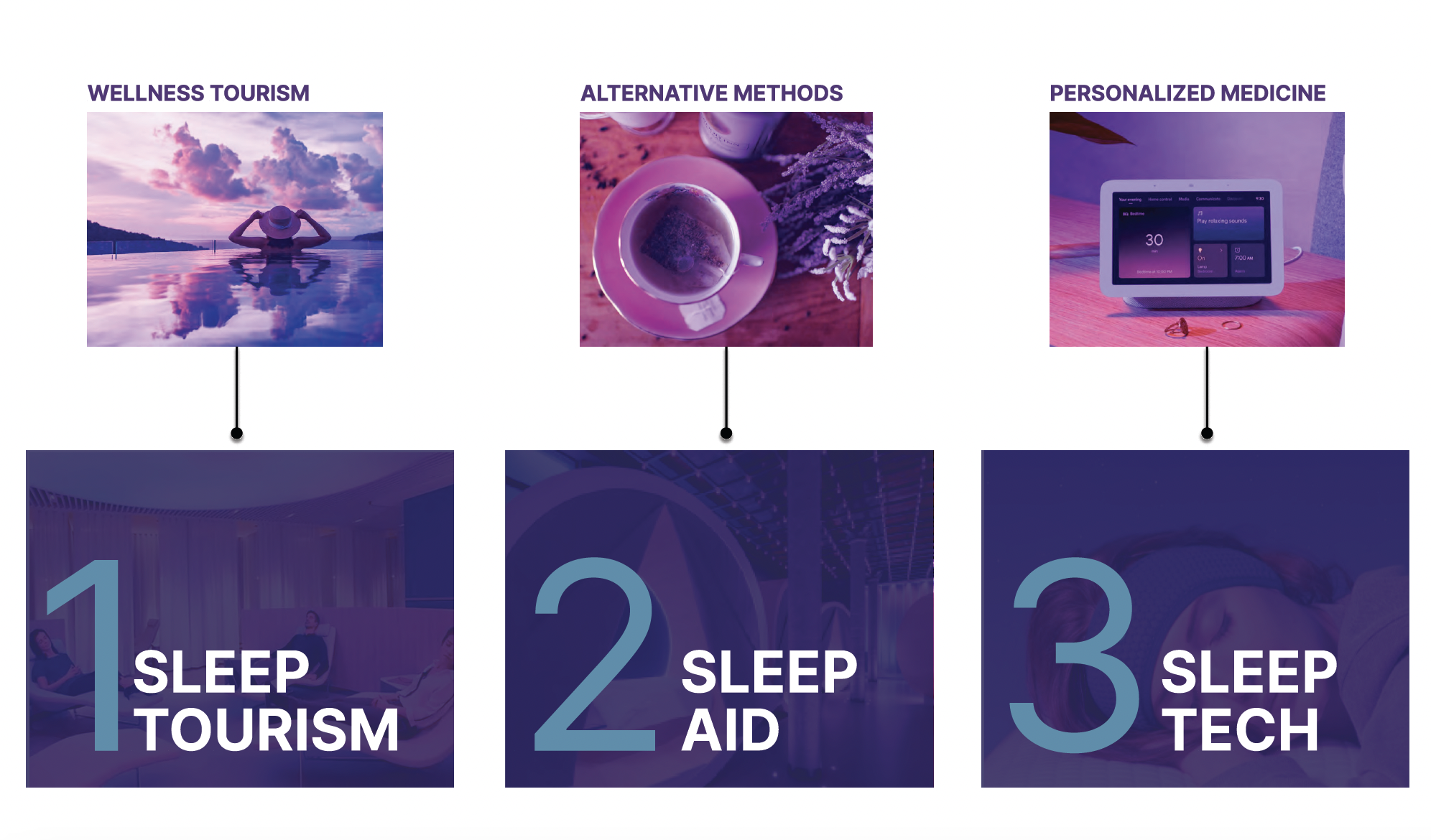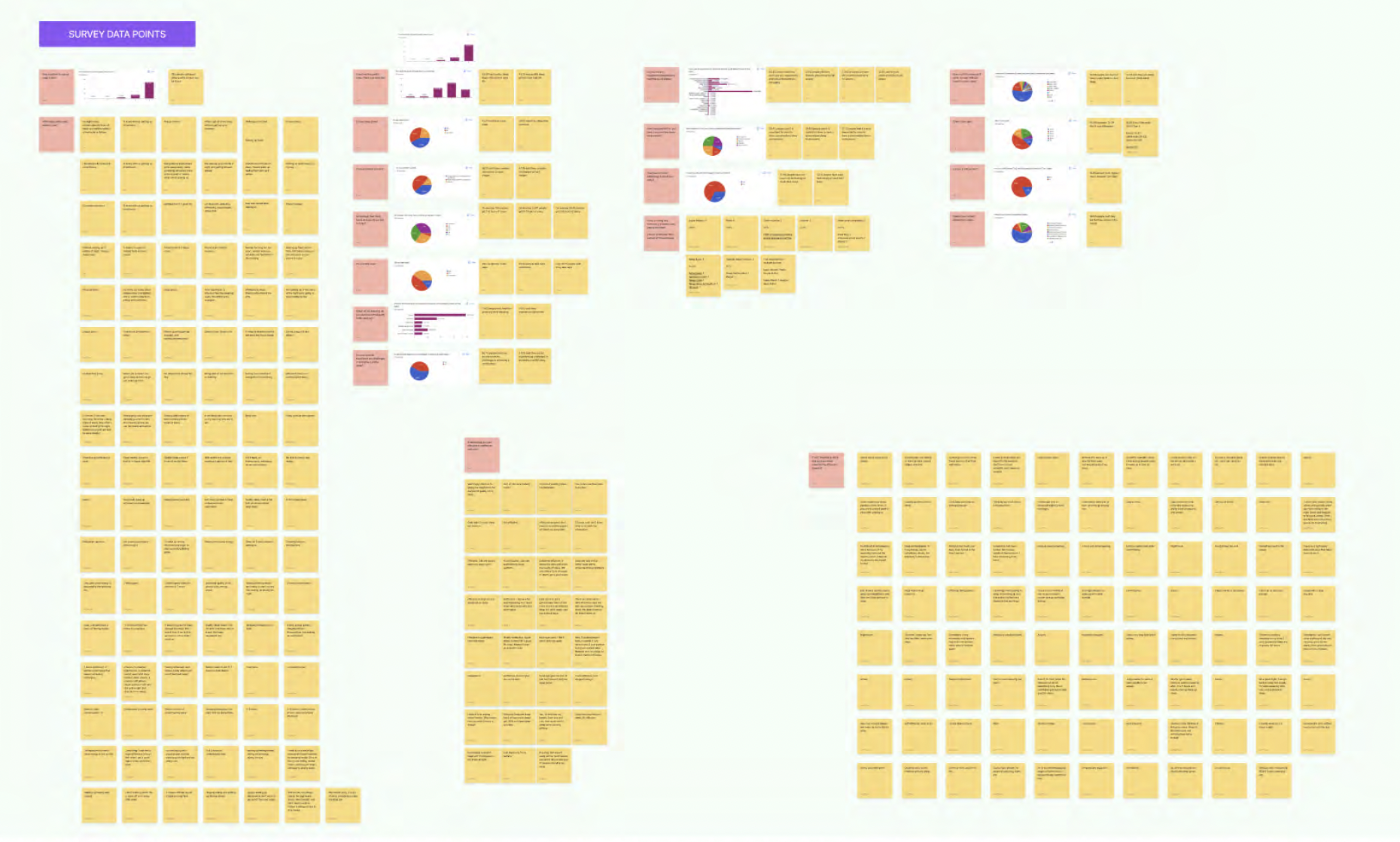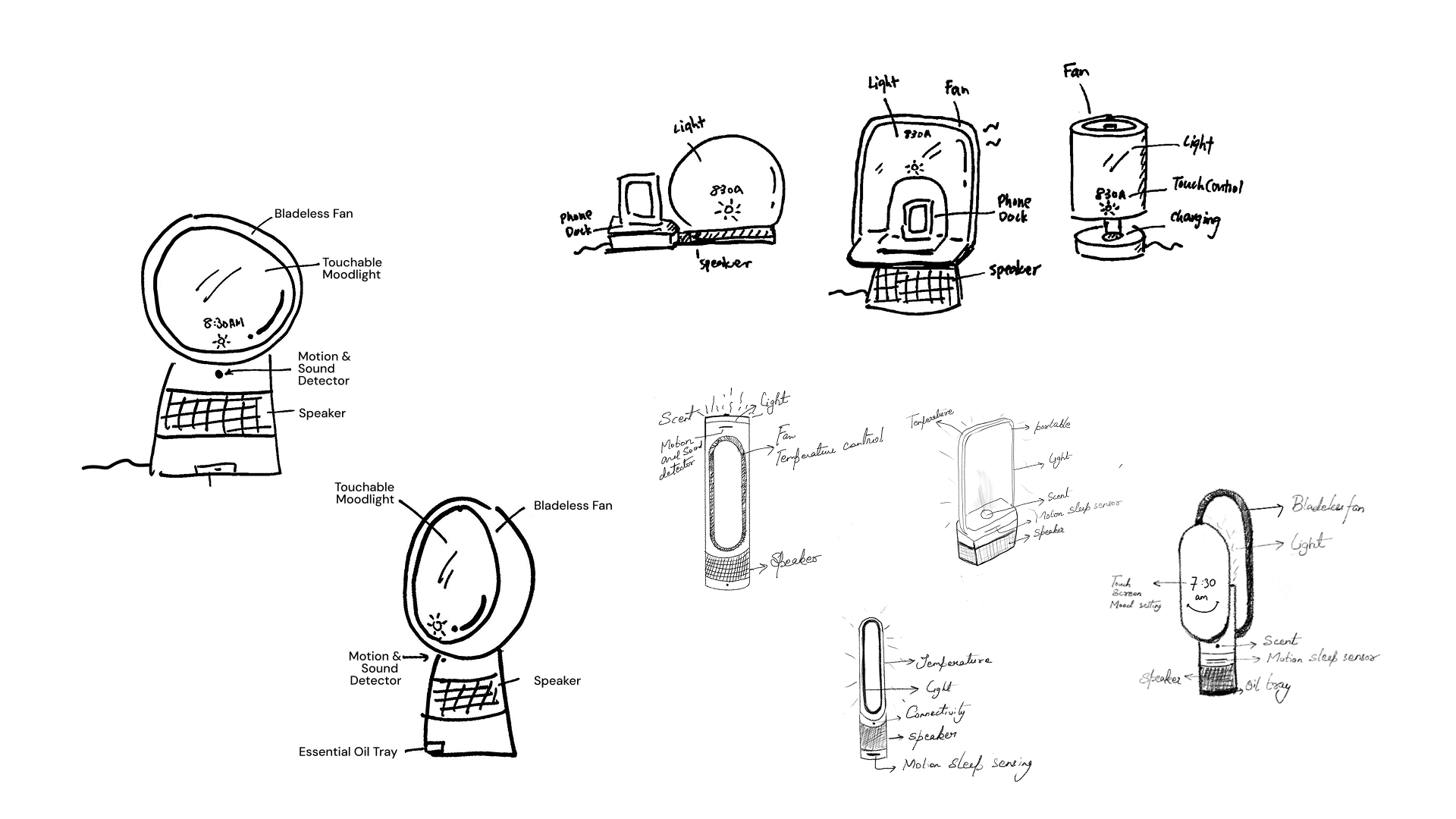All-in-one smart sleep sensory and mobile tracking app
THE PROBLEM
Over 50 million U.S. adults struggle with poor sleep, with stress being a key contributor for 42% of them. Existing sleep aids often cause unwanted side effects like grogginess and cognitive issues, leading users to avoid them. This gap has created a growing demand for natural, side-effect-free solutions that promote restful sleep and overall well-being.
Chronic sleep loss raises stress levels, creating a cycle of ongoing sleep deprivation. Our mission is to help people break this cycle by using practical design and insights from sleep data to turn stress into consistent, quality sleep.
ROLE
Research, UX/UI, Design Strategist
TIMELINE
Jan 2024 - Mar 2024
THE OPPORTUNITY
We saw an opportunity to improve the market by adding automation and personalization, helping users get the most out of both the Bloom device and mobile app to better track and adjust their sleep routines.
TOOLS
Figma, Figjam, Adobe Photoshop
THE PROCESS
We began by selecting an industry to focus on.
As a start-up project, the open brief gave us the freedom to explore any direction which was exciting, but also challenging. Choosing a single focus based solely on our passions proved difficult, so we took a more strategic approach. We analyzed global trends, assessed market opportunities, and ultimately landed on the sleep industry. Through a series of brainstorming sessions, SWOT analyses, and competitive research, we refined our ideas and finalized three strong concepts; Sleep Tourism, Sleep Aid, and Sleep tech, to move forward with.
INSIGHTS
This research phase was critical to understanding user needs and pain points.
Having clear insights was essential for guiding our design decisions with purpose. We were excited to engage directly with our user groups through both surveys and interviews. I led the development of our discussion guide and survey questions, ensuring our approach was both strategic and empathetic. Using tools like Google Forms, Miro, and Excel, we gathered over 100 survey responses and conducted more than 20 in-depth interviews. We synthesized over 1,000 data points through affinity mapping and pattern recognition, identifying key themes that highlighted unmet needs, behavioral patterns, and emotional triggers, ultimately shaping our concept direction, user flows, and feature prioritization.
THE DESIGN
This was one of the most exciting phases—translating insights into design opportunities.
My team and I began by turning each key insight into a “How might we...” statement to spark ideation. We explored the competitive landscape and applied the Blue Ocean Strategy to identify opportunities for differentiation. Through this analysis, we discovered that integrating autonomous technology with actionable outcomes could position our concept ahead of the curve. Using impact–feasibility mapping, we evaluated and prioritized our ideas to ensure we focused on solutions that were both innovative and viable.
After developing prototypes for both the smart sleep device and its companion app, we conducted user testing to validate our direction.
We tested the desirability of key features, the seamless integration between the device and app, and how the products fit into users’ daily routines. Based on the feedback, we iterated on the prototypes to improve usability and relevance. This phase also led us to revise our Business Model Canvas and create a focused creative brief to clearly communicate the product’s value and vision.
THE RESULT
DELIVERABLE: Smart Sleep Device
We delivered an all-in-one smart sleep solution designed to transform any space into a personalized, calming sleep sanctuary.
Unlike typical sleep tech, our product—Bloom—goes beyond passive tracking. It interprets sleep data in real time and makes automatic adjustments to lighting, sound, and scent to actively support better rest and recovery.
DELIVERABLE: The App
To give users more control and clarity over their sleep experience, we designed a mobile app that works seamlessly with the Bloom device. The app allows users to adjust settings, monitor sleep data, and manage their sleep environment from anywhere. With personalized presets and real-time insights, the app helps users build a consistent, calming routine, making quality sleep easier to achieve night after night.
KEY MOMENTS
MY TAKEAWAYS
Prototyping and testing are essential to meaningful design.
This project taught me the value of rapid iteration, not just to validate ideas, but to uncover the most intuitive and feasible solutions. I learned to let go of early concepts and stay flexible, using feedback as fuel for better design.Design doesn’t live in a silo—it’s multidisciplinary.
Working across UX, product, branding, strategy, and marketing showed me how powerful design becomes when it’s connected. Storytelling, positioning, and ecosystem thinking helped me create experiences that go beyond a single touchpoint.Startups require agility, not perfection.
In a fast-paced, early-stage setting, I learned that progress often matters more than polish. I became more comfortable with ambiguity, made faster decisions, and leaned into collaboration to keep things moving, all while balancing vision with viability.














